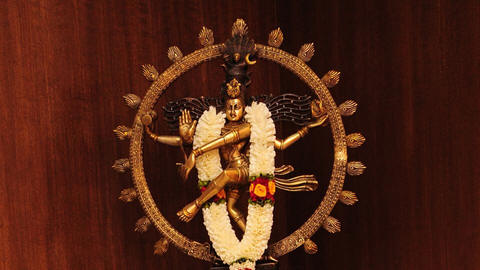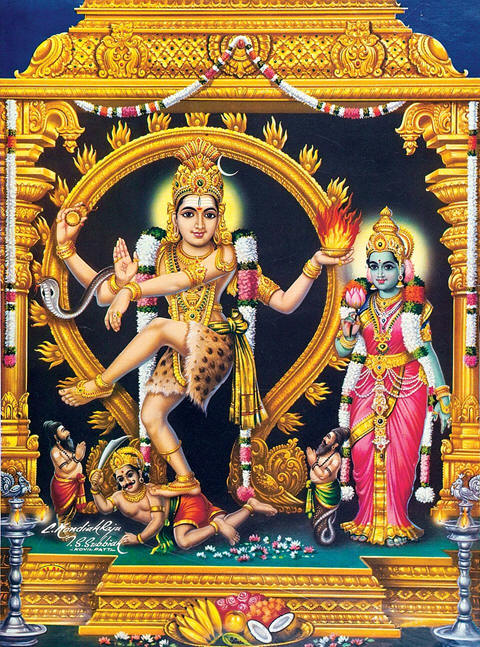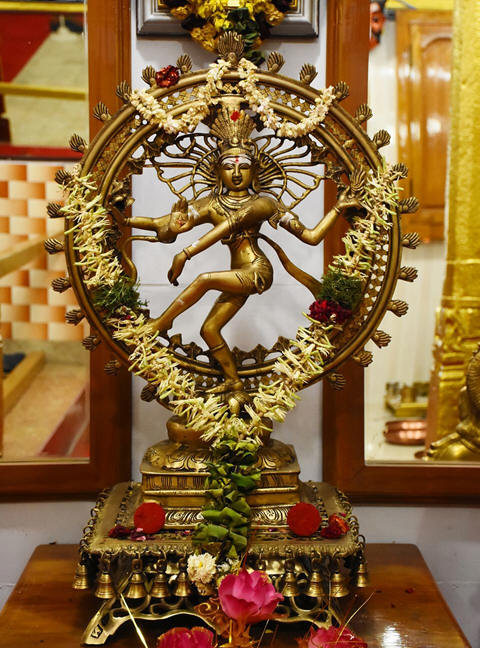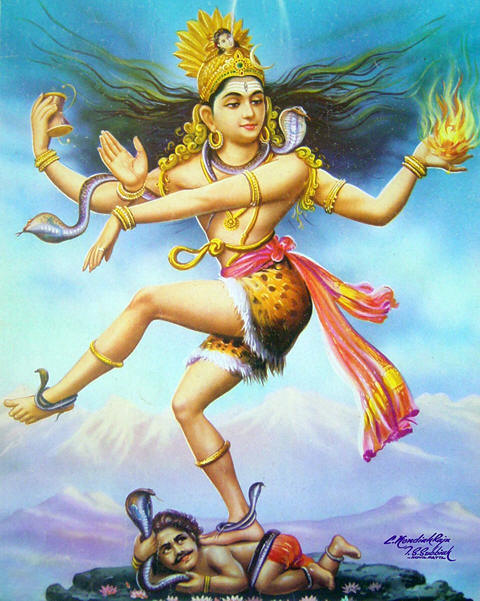The festival’s special features
Author: Sailapathi

1. The sacred bath in Chidambaram in the month of Āṉi has special significance. Patañjali Muni initiated this festival, as recorded in the Purāṇas. The reason Patañjali took human birth is to witness Śiva’s dance. That was a lofty desire of Patañjali. ∞
2. Patañjali Muṉi initiated Āṉi Tirumañjaṉa festival, the Purāṇas say. Patañjali Muṉi was the incarnation of Ādiśēṣa. Once when Tirumāl was at sleep in the milk ocean, his petal-like lips parted, and a smile dawned on his face. Ādiśēṣa wondered about the holy scene to induce a happy smile on Tirumāl. Ādiśēṣa asked Perumāḷ the reason. ∞
3. Ādiśēṣa: ''Swamy! What scene amused you.'' Perumāḷ answered to Ādiśēṣa, ''Śivaperumāṉ is dancing in the guise of Natarajar. I was ecstatic witnessing the dance.'' ∞
4. Ādiśēṣa addressed Perumāḷ, “I too desire to witness that sacred dance scene, and you must bless me for the same.'' Perumāḷ advised Ādiśēṣa to direct his Tapas to Śiva. ∞

The way to attain Śiva
5. These days, the VIP’s familiar face helps get his projects to successful completion. Though incompetent and undeserving, they achieve many things. Likewise, Mahāviṣṇu by his Sakthi could have given the Darsan of that dance scene of Nataraja to Ādiśēṣa at a momentary notice. But, Mahāviṣṇu advised Ādiśēṣa to direct his Tapas to Śiva. ∞
6. Darsan of Śiva’s sacred feet is unattainable by anyone. Hari and Brahma failed in their search for the feet and the head of Śiva. Thus, how could Munis, Jñāṉis, or Bakthas attain what was unattainable by the triad's twosome? ∞
7. Taking refuge at the sacred feet of Śiva for liberation in Kaliyuga is the only recourse. The fruits of Yagas and Tapas obtained in the previous Yugas are attainable for the meditators on the holy feet of Śiva in Kaliyuga. Śiva desires to grant such a lofty boon to his Bakthas in an easy manner. So he took with such a sacred intention an Avatar, wherein he raised his sacred foot and danced as Natarajar. ∞
8. Śiva is dancing his sacred dance all the time. For us to witness it, we need his grace. Attaining it is twofold: Tapas and worship. Ādiśēṣa, desirous of seeing the holy dance firsthand, performed Tapas. Śiva enchanted by his Tapas appeared before Ādiśēṣa in the form and appearance of Brahma. ∞

10. Ādiśēṣa addressed Brahma (Śiva in disguise) appearing before him saying, ''I have nothing to ask of you. Therefore, you may leave.'' Saying thus, he continued with his Tapas. Īsaṉ, appreciating Ādiśēṣa’s mental strength, appeared in his true form. Ādiśēṣa said ''I wished to see your sacred dance.'' Śiva replied, 'Go to Chidambaram Temple,' and disappeared. ∞
11. There are five temple halls for the dance performance of Natarajar. The first one is Chidambaram. It is here that God performs his great, continuous, and boundless dance. Ādiśēṣa came here in the human form to witness the dance of Śiva. To impress on the world how a human being after witnessing the dance will rise to Śiva state, Ādiśēṣa took birth as a human being. Moreover, the raised leg of Śiva is a unique and special feature of the Natarajar form. Śiva showed the ordinary earthbound people through his sacred dance his holy foot, a rare view for the Devas, and the way to attain Sivapadam. Śiva's plane, comprises of four states of bliss (tāṉ-āḷ-ulakiruttal, taṉ-pāl-iruttal, tāṉ-ām-patam-peṟal, tāṉ-ākutal = World of Śiva, Proximity to Śiva, Same form as Śiva and Merger with Śiva). ∞
12. Bharatham is the art born in Tamil country. Its sacred form is Nataraja Perumāḷ. Śiva’s dance posture is prevalent mostly in Tamil temples. Śiva is the king of this art form by which he graced the people, say the Patañjali Purāṇās. ∞
13. Ādiśēṣa was happy performing Śiva’s favorite Abhiṣēkam and temple service on the day of Āṉi Uththira Nakṣatra. Since then, for many thousands of years, this sacred bathing festival has been a regular event. Witnessing this Āṉi Tirumañjanam, ends metempsychosis once for all. The sacred texts declare that misery-free luxurious life on earth will be the lot of the celebrants of the festival. ∞
Natarajar, the Lord of Dance
One of the six ablutions.

14. Āgamas list six ritual ablutions. Among these, Āṉi Uththiram and Māragzhi Tiruvāthirai are special celebrations. These two festivals in Chidambaram are the Brahmotsavams (Great, Grand Festival), each one, a ten-day festival. Abhisēkams and Ārādhanais (ritual ablution and temple service) are the main features of this festival. ∞
15. Natarajar Abhisēkam is important. Thirty-two kinds of substances make the ritual vessels. These six Abhisēkams take place in six-time slots in a day. Agamas give such particulars and declare the Devas enjoy the Nataraja Abhisēkams and worship conducted on earth. The earthbound witnesses of these events will get all the benefits in this birth. ∞
Chidambaram Āṉi (Mid-June ―Mid-July) Tirumañjanam
16. July 28, 2020. In Chidambaram, the ritual ablution and temple services last fro 2 AM to 7 AM. Thousands of devotees witness and enjoy the event. But, under the present unordinary conditions (Covid-19), the devotees have no permission. The administration announced that all events would take place according to Āgamas. The devotees must see the events in their mind's eyes and worship Śiva and recite Śivapurāṇam written by Mānickkavāsagar. The devotees will get the grace of Śiva and enjoy the benefits. ∞